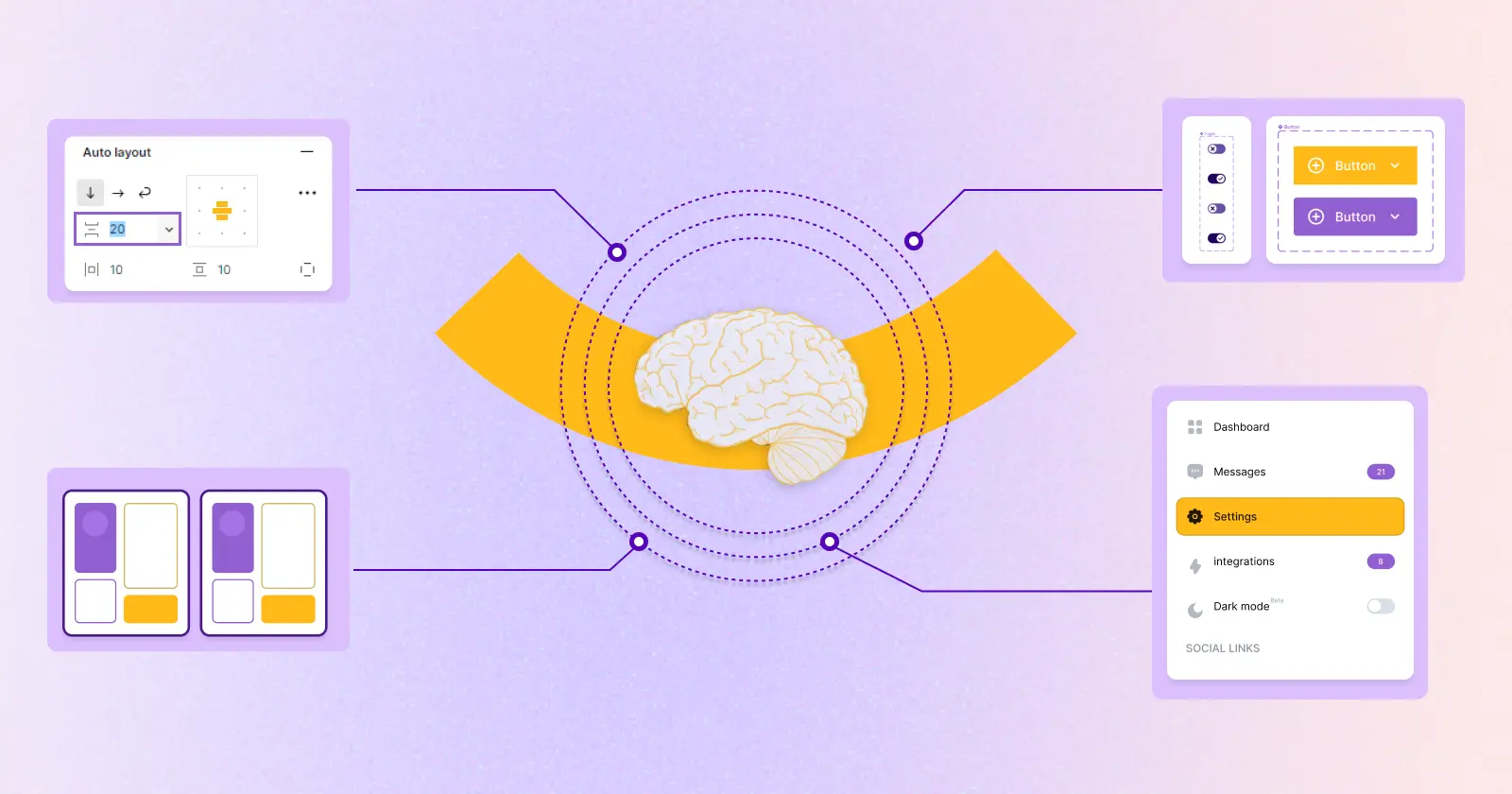When designing interfaces, considering the fundamentals of visual perception can elevate the user experience. The principles of Gestalt psychology offer guidelines to present information effectively. Let's explore key ways Gestalt theory informs UI design.
Gestalt focuses on how the mind recognizes patterns and interprets visual components as a unified whole. Several core principles are particularly relevant for user interfaces.
The principle of similarity, for example, states that visually alike elements are perceived as related. So giving related UI elements matching colors or styles connects them to the user.
Continuation implies that aligned visual components appear as part of a sequence. Laying out page sections, buttons, or icons on an invisible line creates continuity.
Closure describes filling in gaps to complete a shape or concept. Providing just enough suggestions via partial icons or container styles leverages closure.
The figure-ground principle maximizes contrast between foreground subjects and backgrounds. Bold, layered focal points stand out easily from subtle backgrounds.
And the law of proximity says objects close to each other are perceived as grouped. Use white space purposefully to distinguish UI groupings.
There are several other helpful laws Gestalt outlines. Overall, consider holistic perceptions. Guide rather than force. Design to make relationships clear. Keeping Gestalt concepts in mind elevates UI design from assembling pieces to crafting unified wholes.
How have you applied Gestalt theory while designing? What insights have you drawn? Let’s discuss in the comments!
related tags

 3 mins to read
3 mins to read



